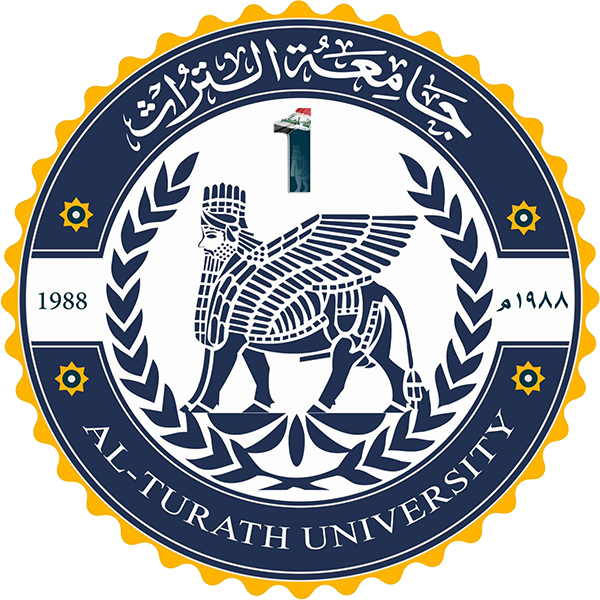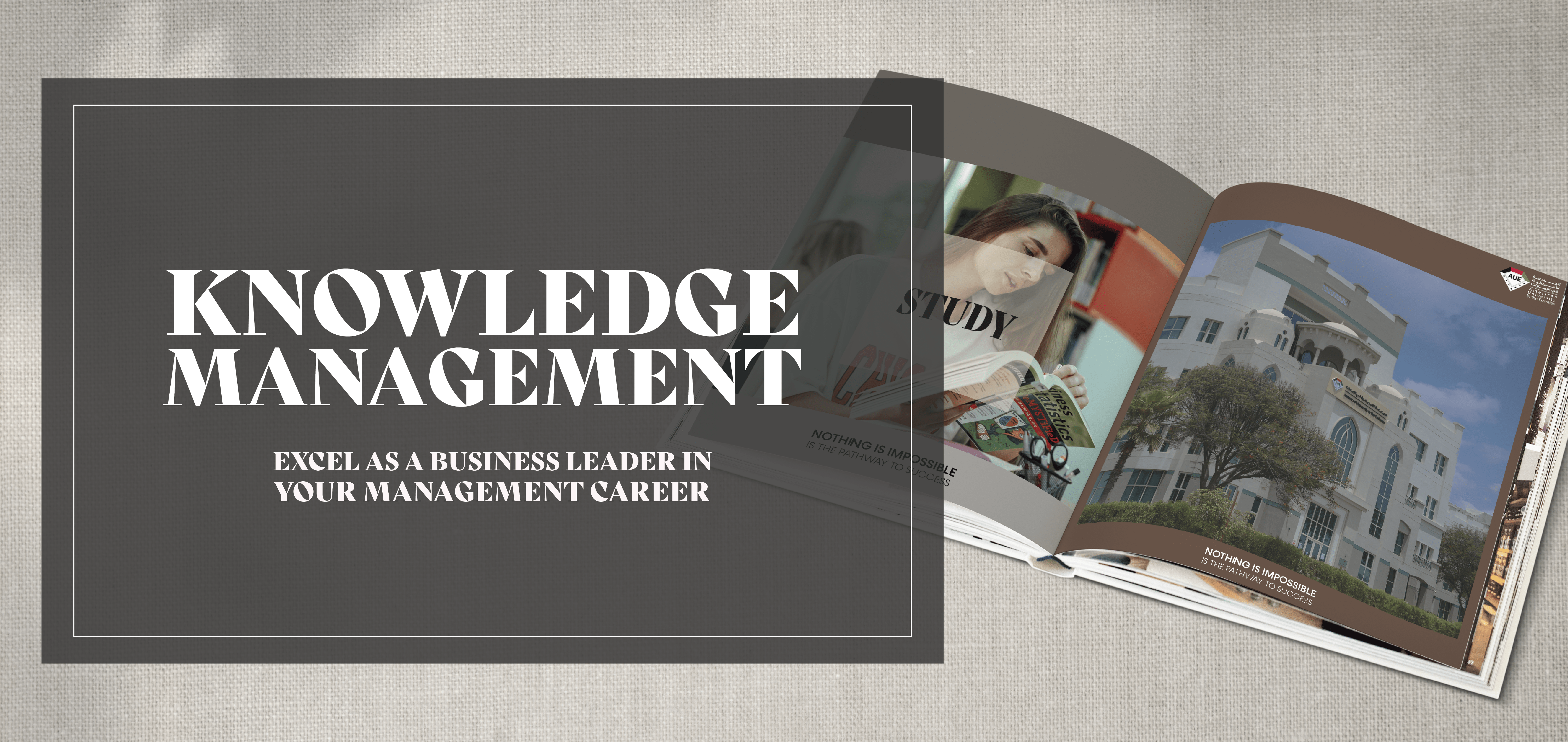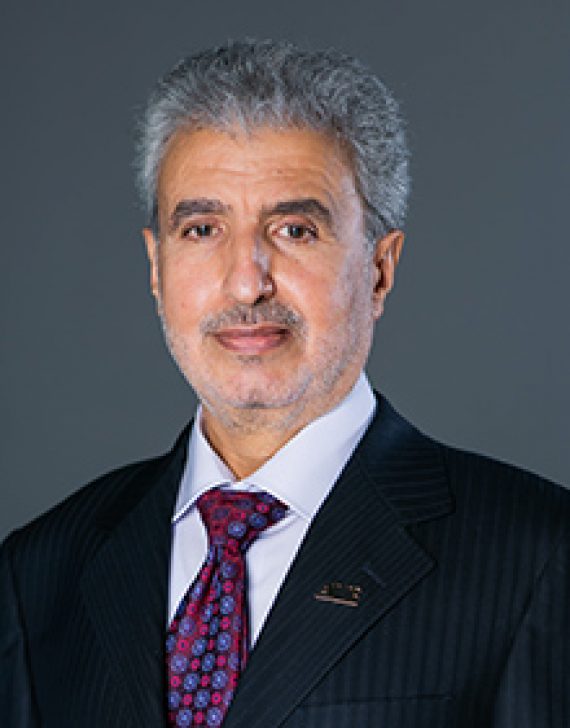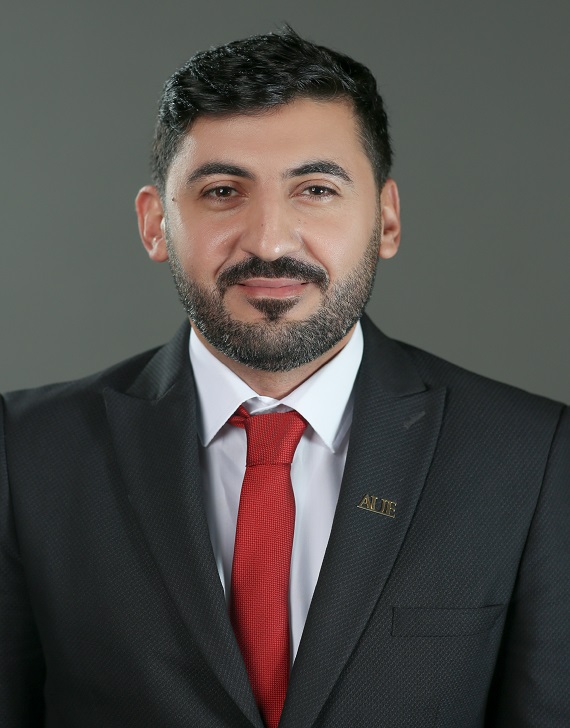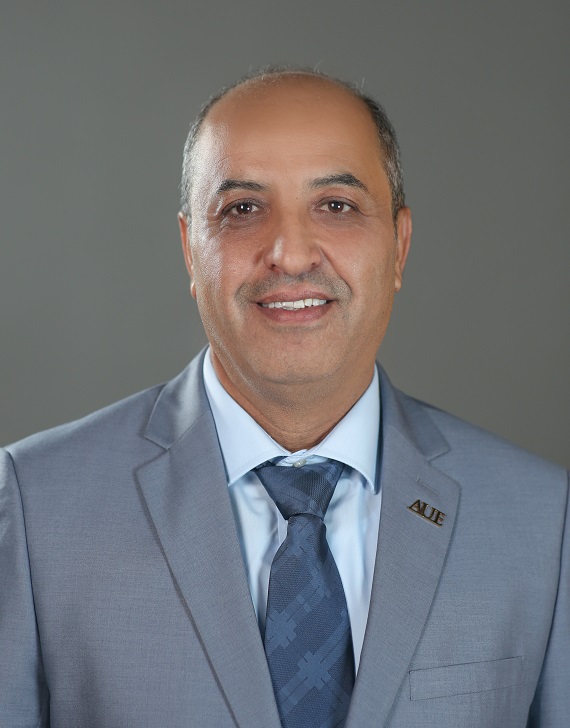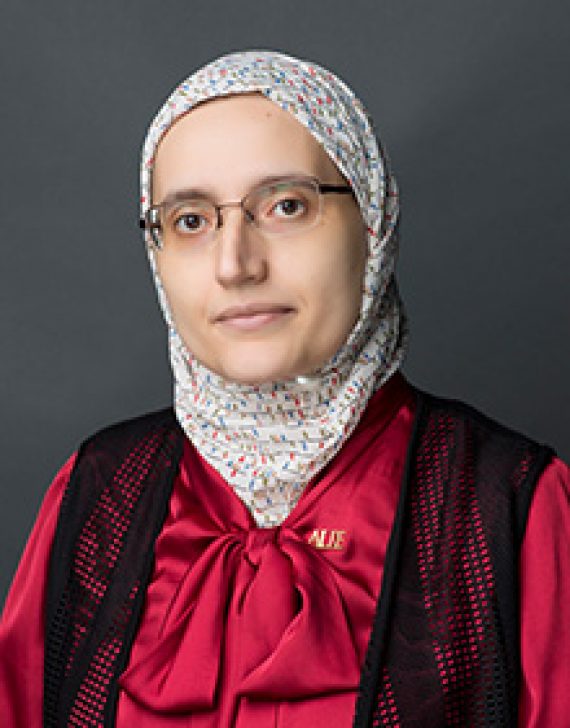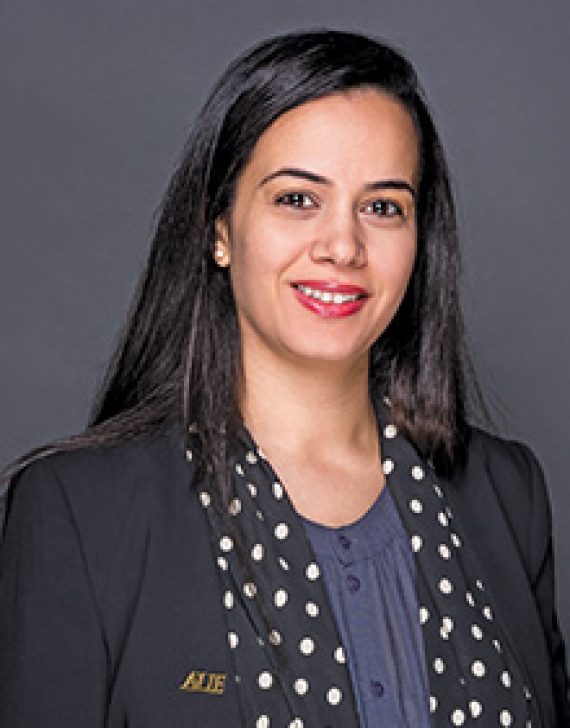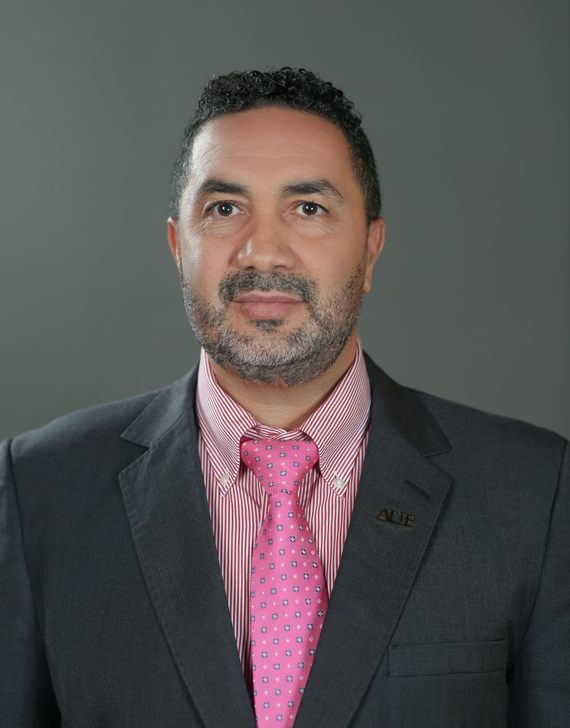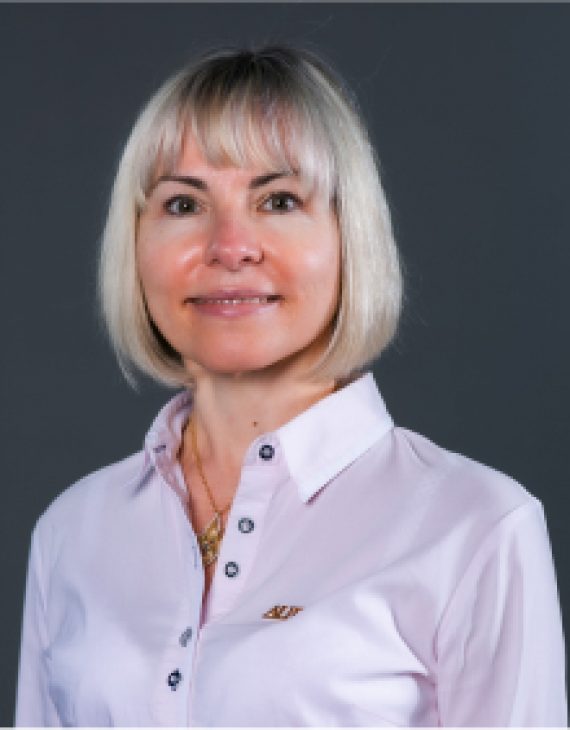Bachelor Of Science In Design – Interior Design
- Overview
- Program Structure
- Accreditations
- Faculty
- Admission
-
Duration
4 Years
-
Classes
Weekday Weekend
-
Fees
Tuition (One Semester) ……… Approx. 20,000 AED
One academic year is two semesters
Admission (One Time) ……… 3,150 AED
About Specialization
Create a Space for Everyone
The Interior Design program aims to teach students how to analyze design factors based on understanding the project objectives, goals and end user requirements. The course work includes design, analysis, construction and job administration. Students will be expected to conduct a wide range of research and on-site examination of areas selected for project work.
The primary objective of the interior design courses in the American University in the Emirates is to equip students with creative awareness, professional attitudes, imagination and technical knowledge required for this profession. Interior Design is a multifaceted profession in which creative and technical solutions are adopted within the building to maintain and achieve an interior environment through systematic design processes and techniques. The program objectives are as follows:
- Create a wide variety of interior designs for any project from concept stage to completion.
- Develop and implement designs through a variety of new and traditional design options.
- To become able to apply effective design techniques, principles and theories within one’s work.
- Learn and apply appropriate design tool and terminology.
- Use effective visual communication when completing projects and presentations.
The College has large design studios, state-of-the-art facilities provided with the latest electronic media and printing equipment and an extensive library filled with the latest tutorial educational resources relevant to interior design. They are all available for students to use in an engaged learning environment.
Students will be studying under the direction of experienced architects, engineers and tutors. Students will work towards projects in both commercial and residential interiors, developing a sense of how people function inside and outside these spaces. They will develop a range of live projects with themes including leisure and public interior spaces.
Program Learning Outcomes
- Demonstrate breadth and depth of knowledge in interior design concepts, processes and practices.
- Use and integrate knowledge and relevant technologies, methodologies, and professional skills into meaningful interior design solutions.
- Apply critical thinking and analytical skills per industry standards.
- Produce a satisfactory body of interior design work, appropriate for a professional position in the industry.
- Appraise sustainable interior design practices in regional and global contexts.
Preparatory Courses
Prior to their enrollment in the program, students applying for Bachelor of Science in Design must sit for the placement test related to the program, failure to successfully passing the placement test, they are required to enroll in the following courses:
#
1
2
3
Course Code
CIT 90
ENG 99
DES 90
Courses
Computer Preparatory
Academic Writing (*)
Drawing Preparatory
Credit Hours
0
0
0
Exemption Condition
Passing the Placement Test
Passing the Placement Test
Passing the Placement Test
Program Structure
Course Category
General Education Courses
Core Courses
Specialization Courses
Total
Total Number of Courses
11
11
21
43 Courses
Total Number of Credit Hours
33
30
63
126 Credit Hours
- General Education Courses
- Core Courses
- Specialization
A: University Core Requirements
The student selects 6 credit hours (2 courses) from the list below:
B: Languages and Communication Studies
The student must select 9 credit hours (3 courses) from the list below.
Students must take all of the following courses:
Students must take one of the following Arabic Language courses:
C: The Natural sciences or Mathematics
The student must select 6 credit hours (2 courses) from the list below:
D: The Social or Behavioral Sciences
The student must select 3 credit hours (1 course) from the list below:
E: The Humanities or Arts
The student must select 3 credit hours (1 course) from the list below:
F: Islamic Studies
The student must select 3 credit hours (1 course) from the list below
G: UAE Studies
The student must select 3 credit hours (1 course) from the list below.
This course examines color theory as an aid to communication, control and expression in traditional and contemporary design. The fundamental course allows students to explore color topics including color theory, color interaction, and color psychology. Students will study a wide range of creative and technical aspects of color and its use in design, experimenting with traditional mediums and digital applications.
This course is one of the fundamental courses in which the students will be introduced to the visual elements of design comprising of: point and line; shape and form; surface and texture; color and value; light and shadow; negative and positive space. The students will practice design principles: unity and variety; similarity; emphasis and point of interest; scale; proportion; and balance. This course is designed to give the students a strong understanding of 2D and 3D visual communications.
Fundamentals of Graphic Illustration and Digital Imaging introduces students to the use of a computer as a powerful digital drawing and imaging tool. The focus of the course is on basic computer skills and use, mastering fundamental digital illustration and imaging skills, and developing efficient working styles. The course learning experience incorporates a variety of visual artwork strategies including but not limited to, color/ texture enhancements, typography, pen/ brush tools, , perspective tool, using different color schemes. This course involves considerable hands-on instruction and multiple projects using Adobe Photoshop/ Illustrator.
This course provides a core introduction to drawing, covering a wide range of basic and intermediate practical and technical skills. Students will explore approaches and concepts to the subject through manual practice using a comprehensive range of media and with reference to great masters in the field. Traditional and objective drawing skills in the use of line, tone, form and perspective provide the foundation for learning in this course. Students are required to develop their ability to observe, perceive and interpret through drawing the world around them, reflecting their understanding of 2D and 3D space.
This course introduces students to human centered design thinking methods and practices through a variety of hands-on activities. DT is a methodology used by designers for the identification of problems and the definition of innovative solutions. Students will engage in processes for idea generation including sketching and diagramming, concept mapping and low-fidelity prototyping infusing visualization techniques and empathic tools into their design process.
This course is a chronological survey of art and design offering students an in-depth understanding of the role of art throughout history with a strong focus on aesthetic values, socio-cultural influences and technical terminology. Architecture, sculpture, painting, decorative arts, prehistoric art, design of the ancient world, the world beyond Europe, early Christian and Islamic art and the art of the Middle-Ages and Gothic period form the foundation of the course material spanning a period from 40,000 BC to 1300 AD.
This course covers the extensive cultural shifts from the early Renaissance through to the 20th century. Students will study painting, sculpture, furniture architecture as individual works in relation to their geographical, social, political, and religious environments. Also, analysis and comparative study of periodic decorative elements, strong designs and architectural features will be conducted.
In this course, students will learn various techniques to construct objects in digital 3D space, as well as physical 3D solutions. Students will follow a concept development process of research and sketching, to generate designs for 3D production. A final original design, related to each student’s major, will be constructed using industry-standard 3D software.
The course is designed to promote interdisciplinary collaboration in design. Graphic, Interior, Fashion Design and Digital Animation are brought together into one studio environment to allow students with different skills and strengths work as a team solving a relatively complex design problem. Students develop a research plan followed by the establishment of intent and context for the topic and identification of stakeholders, leading to concept exploration and creation of a holistic design solution in cooperation with other specializations, institutes or with professionals from the industry.
Pre-Internship is a zero credit hour internship preparatory course designed for students seeking an internship. The course will prepare students to successfully plan their internship by researching and identifying potential internship opportunities, creating professional resume and letter of introduction, developing interviewing and networking skills as well as a portfolio per industry requirements. Students will go through different learning modules including experiences, team work skills, communication skills, leadership skills, problem solving, self-management and professionalism to be able to make the most of their internship.
The college considers students’ internship as an essential channel that brings together the college, the students, and the job marketplace. Furthermore, internship is a method that integrates the instructional theoretical backgrounds to real existing practice. The training allows them to work under the observation and guidance of the field supervisor without replacing any regular employee. The internship is closely monitored by a college faculty member as an academic supervisor.
This course is an introduction to spatial organization of interior space. The students will develop basic skills in documenting interior design concepts, analysis and conceptual development. The focus will be on design inquiry, process and presentation through drafting, orthographic drawings, use of tools, sketching, lettering, dimensioning, finish drawings and models
This course introduces students to design elements and their context, relationships and role in establishing the functionality, organization, and aesthetics of interior spaces. In addition, the students will grasp the physical and cultural background of interior designs and the way program requirements may materialize to fulfil the needs and aims of its users
This course introduces the basic drafting skills using CAD. Students will learn basic architectural / interior technical skills and integrate their existing drafting and design skills to produce a simple set of drawings for interior spaces.
This course will introduce design as a product of the age and cultural context in which it was created. Design will be demonstrated as a representative of the political, religious, aesthetic, socioeconomic, or other ideals that prevailed at a certain time and place in history. On the other hand, design will be revealed as a tool that was intentionally used to achieve specific goals: political, cultural, religious, in order to influence societies. Through the examination of the history of design, students will develop a critical view of historical examples, gain an informed understanding of today’s built environment and apply this knowledge into their practice of design. An overview of the history of interior design will be offered and its direct relationship to other design products including architectural and decorative art products. The material will span the time from ancient civilizations to the twenty first century, and will touch on a worldwide geographical area.
This course introduces the materials and finishes used in the design of interior spaces and the basis of their prospective impact on the function and aesthetics of architectural interiors, the users’ wellbeing and safety and the environment at large. The students will explore the wide range of interior building materials, which will develop their prospects for creativity in design solutions. Technical vocabulary and systematic concepts associated with materials’ sourcing, manufacturing and evaluation will be stressed. Finally, the students will be aware of their role as interior and product designers in preserving natural resources and improving the quality of interior built environments for the users through studying examples of best practices.
This course is an introduction to the planning of interior residential spaces. The students will be introduced to the methodology used by interior designers to conceptualize, analyze, and develop workable solutions to residential applications. Students will examine existing floor plans, study furniture placement, construct a model and develop layouts for residential spaces. An emphasis will be placed on sustainable design concerns, users’ requirements and cultural influences.
In this course, students will be introduced to the interior design construction and service systems according to the building codes and regulations and the ways they affect interior design. Students will learn technical terminology of the built environment and the relationship between design, construction, services and codes and the way this relationship influences design decisions. The importance of designing a functional and safe interior environment for all users will be emphasized.
This studio course will introduce the students to the elements of commercial design. Emphasis will be placed on concept development for the design of office space for specific clients, using creativity to enhance the space while maintaining the identity of the client/brand. Students will critically analyze the workspace requirements and user needs then apply evidence based design in their office layout techniques and furniture, lighting, and finishing selection. Considerations of the relevant accessibility codes, universal design topics and sustainability are integrated in the course material.
In this course, students will be introduced to the interior design construction and service systems according to the building codes and regulations and the ways they affect interior design. Students will learn technical terminology of the built environment and the relationship between design, construction, services and codes and the way this relationship influences design decisions. The importance of designing a functional and safe interior environment for all users will be emphasized.
This course will introduce students to the process of taking plans created earlier on a CAD software to an advanced presentation level of 3D modeling and rendering through the use of time based media software such as 3D Studio Max. Small practice projects are used to explore topics such as the import of CAD drawings, building a 3D model, materials and textures, lighting, rendering, cameras and animation.
This course considers the changing role of theory with respect to the design practice over the course of the twentieth and twenty-first centuries. Examining key designers, movements, and texts, this course delivers an outline of the major theories that have informed, energized, or undermined recent architectural, interior and product design discourse. The course, especially considers the development of design knowledge as a factor that contributed to the main social, political, cultural, and technological changes of the time.
This course will introduce the students to the principles of interior design professional practice. Students will learn the basics of professional ethics and project management. Types of business contracts will be demonstrated and ways to enhance the design career will be stressed.
This course is an introduction to the principles of lighting design, including lamps, luminaires, lighting techniques, and applications for residential and commercial projects. It provides students with a specific approach related to light, color, texture and form, and places a special emphasis on sustainable methods and opportunities. It introduces fundamentals of lighting design including technical terminology, criteria, calculations, planning and layout.
This course will introduce students to the different fiber qualities and properties, yarns, weaving methods and how they affect the performance of textile products and applications. The course material is presented within the context of sustainability awareness and the role of design professionals in preserving natural resources and preventing pollution. Applications in interior design will be emphasized through hands-on projects and assignments.
This course aims to focus on the sustainable design approach and its holistic effect. Students will develop an understanding of various sustainable elements and factors including materials, water usage, indoor air quality, thermal comfort and the principles of alternative energy. The current status of sustainable practices will be analyzed. Hands-on projects using environmentally conscious materials are implemented in the course. The designer’s ethical responsibility in the context of sustainable design is stressed.
This course explores advanced concerns in design and detailing of interior finish structures. The course is planned to highlight the importance of detailing as part of the evolving design. The students will produce interior millwork drawings, and construction documents, through which they will be able to understand the assimilation of building codes and life safety subjects. They will also realize the possible methods through which they can communicate their design goals to the contractor or fabricator in order to achieve a successful and efficient execution of the design project. They will learn the importance of being part of a design team through projects that involve group collaboration.
Students will gain understanding of various factors related to the design of hospitality space. They will be exposed to topics that include types of lodging, food facilities, circulation, furniture layout, and materials selection. Emphasis is placed on the application of universal design principles and the needs of the general population. Sustainably considerations will be highlighted throughout the course. Through research and case studies, best practices will be illustrated.
The course will introduce furniture design and fabrication as they represent the hallmark of the human engagement with the material realm. Students will learn about furniture as a vehicle to understanding the smaller scale of form and space that engages human occupation and use, and as a scaled object of the evolving relationship between form, material and assembly. Another aspect that the students will be exposed to is the interplay between furniture design and the principles of anthropometrics and ergonomics, which will lead to a better understanding of the essence of universal design. The role of technological advancements in CAD fabrication will be emphasized as they represent new challenges and new opportunities in the exploration of the craft. Both historical and contemporary material and fabrication processes will be explored, through which, students will work together to research material form and assembly process, producing design solutions and finished projects of furniture fabrication. Students will work in groups and will use various methods to develop furniture design pieces using wood as a primary material for fabrication.
This course provides an opportunity for students to focus on various issues in fashion design and to study advanced techniques and processes. Course content vary each time the course is offered. The course emphasizes research analysis and the creative process that leads to innovative solutions and allows students to pursue individual projects related to the subject of the course. The course may include lectures, discussions, individual projects and critique, depending on the nature of the topic.
This course covers the pre-production planning and processes for interior design projects. The students will follow the necessary steps in the production pipeline while identifying and refining their idea, concept and methodology.
The capstone graduation project is the representation of the students’ in-depth learning and understanding of their field of specialization through a long-term project accomplished in a professional manner. They are evaluated on their ability to complete this project with originality and quality, applying the skills, techniques and methodologies they have learnt during their course of study.
The student is assigned to research and identify a topic, and develop a detailed research proposal highlighting the goals, objectives, tasks, methodology and time plan. The topic could range from an academic research to school/ community service, student-developed business or any other area of personal interest. The student communicates regularly with his/ her academic-capstone advisor for review, while working constantly to improve the outcome by building upon previously gained expertise. The academic-capstone advisor contributes through meaningful feedback and setting expectations of standards, offering an opportunity for open-ended learning through self-reflection and improvement.
The process is documented, findings are compiled and presented orally as well as in writing through a capstone report.
The project is divided into three distinct phases:
- Research and topic selection.
- Conceptual and design development.
- Design execution/ design presentation, with necessary documentation and a comprehensive report.
Recommended Study Plan
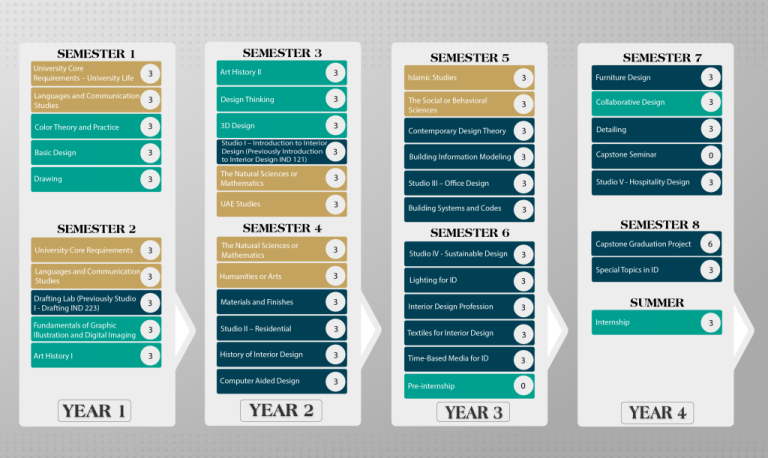
Accreditations
The American University in the Emirates is licensed by the UAE Ministry of Education – Commission for Academic Accreditation | caa.ae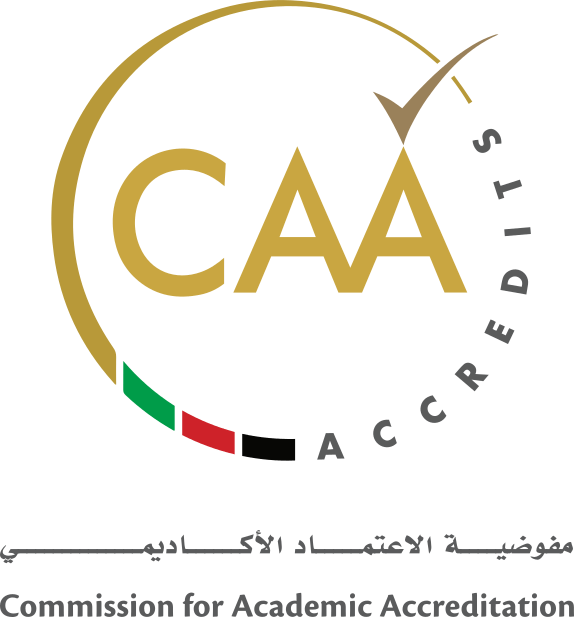
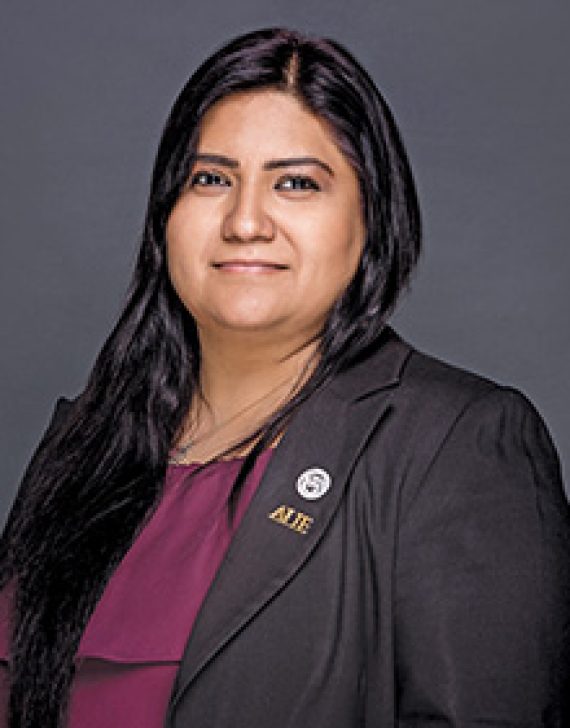
Prof. Asma Salman
Professor / Dean

Prof. Munther-Momany
Professor / Program Director - Master of Business Administration
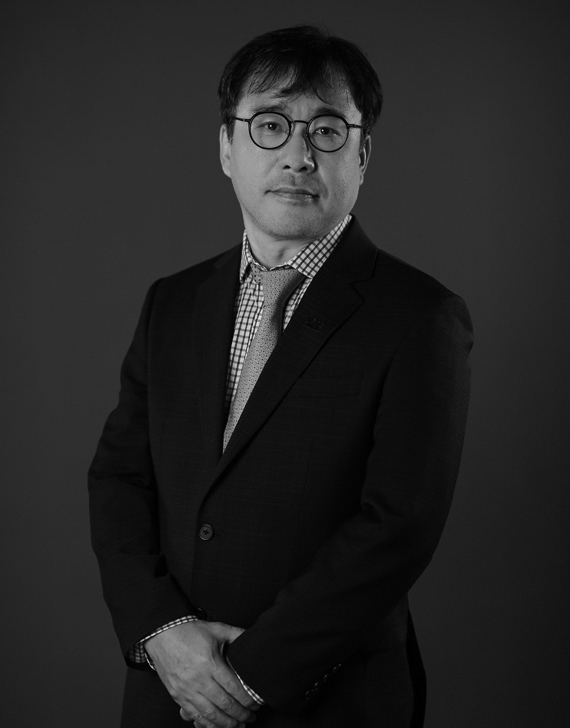
Prof. Sung IL Hong
Assistant Professor / Program Director - Master of Sports Management

Dr. Azzam Hannon
Associate Professor / Department Chair of Accounting and Finance
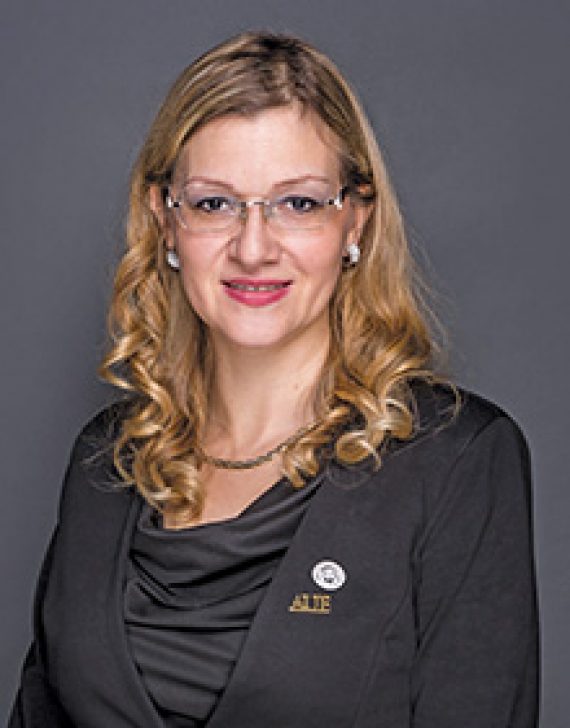
Dr. Nikolina-Ljepava
Assistant Professor / Department Chair of Management
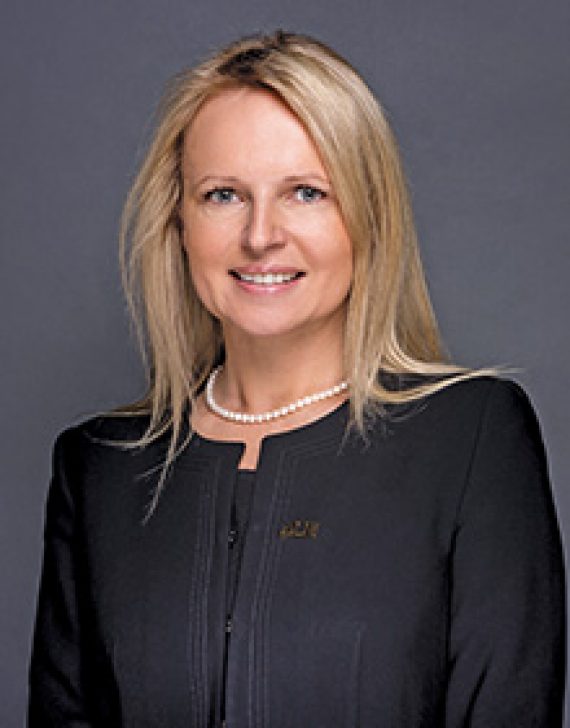
Dr. Edyta Skibińska
Assistant Professor / Specialization Coordinator - Hospital and Healthcare Management

Dr. Mohammad Alsmairat
Assistant Professor / Specialization Coordinator - Logistics and Supply Chain Management

Dr. Riad-Al-Chami
Assistant Professor / Specialization Coordinator - E-commerce and Marketing

Dr. Samer Kobrossy
Assistant Professor / Specialization Coordinator - Business Management
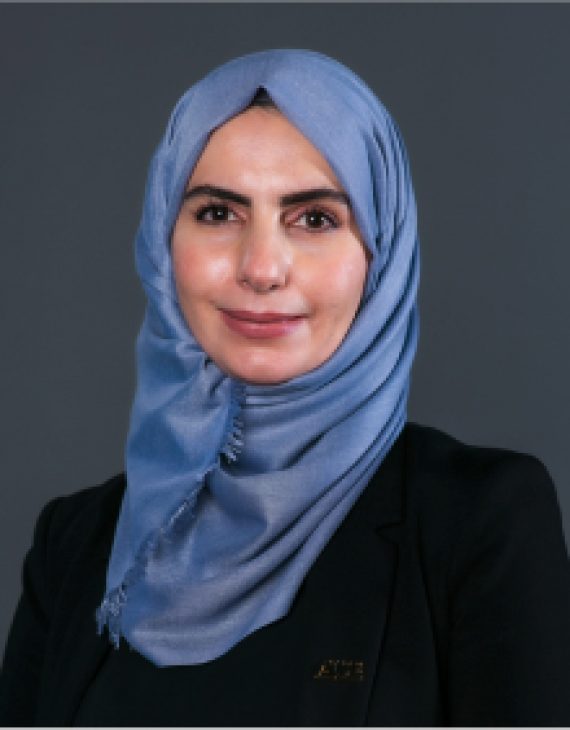
Dr. Tamara Mohammad
Assistant Professor / Specialization Coordinator - Human Resource Management

Dr. Alaa Mushtaha
Assistant Professor / Director of Innovation & Lifelong Learning (RYADA)
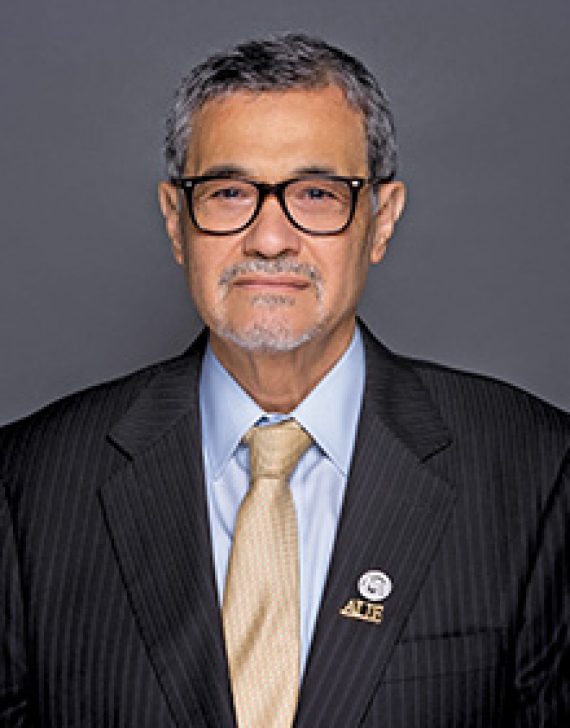
Prof. Salaheddin Abosedra
Professor
Graduation Requirements
For graduate degree completion, graduate students must satisfy the following requirements:
- Earn a minimum CGPA of 2.00 on a scale of 4.00.
- Successfully complete all courses as described in the study plan.
- The Degree Completion requirements must be met within the timeframe of the program.
- Transfer students must successfully earn a minimum of 50% of the course credits for the program at AUE.
Joining the Program
- Fall Semester
-
September
-
Spring Semester
- January
- Summer Semester
- May
